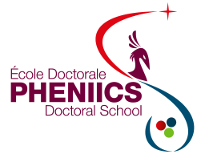Orateur
Mlle
Amelia Maia Leite
(Cea Saclay)
Description
The GBAR experiment will measure the free fall of antihydrogen to test the weak equivalence principle with antimatter. In order to produce this atom with a velocity of the order of 1 m/s, we will use an intermediate state, the H$^+$ ion, composed of an antiproton and two positrons. This ion can be slowed to such velocities and then neutralized by photo-detachment of the excess positron. Its production is foreseen through two successive reactions: $\bar{p}$ + Ps $\rightarrow$ $\bar{H}$ + e$^-$ and $\bar{H}$ + Ps $\rightarrow$ $\bar{H}^+$ + e$^-$, where Ps stands for positronium: a bound state of an electron and a positron. During my thesis I'll measure the cross section of the reactions that are charge conjugate of the above, i.e. where the antiproton is replaced by a proton, with production of hydrogen and of the H$^-$ ion. For that we use the positron source of Irfu at CEA Saclay, based on a small electron linac; a buffer gas trap and a multi-electrode Penning-Malmberg trap, with a 5 T magnetic field, to cool and trap the positrons; an SiO$_2$ target that produces a Ps cloud when bombarded with positrons; and a proton gun. This apparatus will later be moved to CERN where the antimatter reaction will be studied with a more powerful linac and a source of antiprotons.
Auteur principal
Mlle
Amelia Maia Leite
(Cea Saclay)



